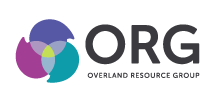ADAPTING TO NEW TECHNOLOGY IS NECESSARY TO MEET DEMAND, IMPROVE EFFICIENCY, AND DRIVE GROWTH—BUT WITH IMPLEMENTATION COMES CHALLENGES.
If your organization is like most, you put an enormous amount of energy and money into major software updates and technology changeovers. Typically though, not nearly enough attention is put toward planning and allowing room for adaptation to change. This can lead to problems that run deeper than a technology glitch.











